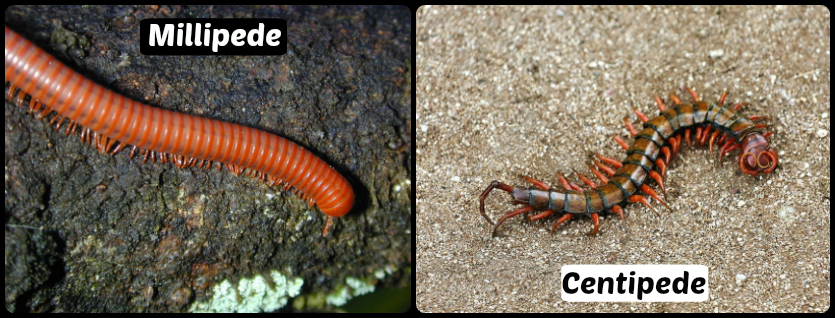
Centipede And Millipede Extermination
Centipedes are beneficial to the control of other insects and this may be a good reason to keep them around. The most likely time to see centipedes in your home is in the spring or fall. When you need to get rid of centipedes and millipedes, especially when they are in your home, you should call a centipede exterminator or millipede. Getting Rid Of House Centipedes. Where Centipedes are Found. Centipedes usually live outside, but the House Centipede you can find inside as well. Centipedes usually live outdoors in damp areas such as under leaves, stones, boards, tree bark, or in mulch around outdoor plantings.
Where Centipedes are Found
Centipedes usually live outside, but the House Centipede you can find inside as well. Centipedes usually live outdoors in damp areas such as under leaves, stones, boards, tree bark, or in mulch around outdoor plantings. If they are around the foundation of the house, they may wander inside. Most centipedes are active at night.
Centipede Identification
Centipedes(100 legs) are usually brownish, flattened, and elongate animals which have many body segments. Centipedes are flattened, with many different body segments. Centipedes have one pair of legs attached to most of these body segments, they can have up to 177 pairs of legs. Centipedes differ from millipedes; millipedes have two pairs of legs on most segments and bodies which are not flattened. Centipedes are between 1-6 inches, and the House Centipede is 1-1/12 inches.
How to Kill Centipedes
Centipedes can be prevented from gaining entry into buildings by sealing and caulking gaps around siding, windows, doors, pipes, wires and other structural voids. An easy to spray foam spray like Pur Black NF Foam has a closed cell foam that seals openings and voids from insects and rodents from entering buildings.
Removal of centipedes habitats including trash, rocks, boards, compost piles, and other hiding places around the structure would help reduce the population. The House Centipede will prefer to live in damp areas like basements, bathrooms, behind baseboards, or attics. House centipedes can be controlled indoors by eliminating their harborage areas where possible and using a vacuum to remove exposed centipedes.
Insecticide Sprays
Apply a residual concentrate with a hand pump sprayer.
- LambdaStar UltraCap and Cyper WSP may be applied inside or outside and are residual insecticides. These products are sprayed along cracks and crevices, entry points, and baseboards and discourage centipedes activity. These products should be applied as a 3- to 10-foot band around the perimeter of the structure, into harborage sites, and/or around potential entry points. Both products will give you long term residual-about 3 months, and is a good spray for all types of surfaces.
- Liquid applications can be introduced into cracks and crevices along baseboards and into other potential hiding places.
Cyper WSP, with Cypermethrin 40.0%.
Insecticide Aerosols
In addition to the recommended residual insecticides, Lambdastar UltraCap or Cyper WSP, you may also use an aerosol like Invader HPX , sprayed around doors and windows and other places where these pests may enter premises. This aerosol has a crack and crevice tip to apply in the very small cracks and crevices; locations where the liquid spray can not go.
Insecticide Dusts
As an extra measure, use a residual dust such as D-Fense Dust. Dust attic areas and under baseboards. A recommended dust for attic areas would be D Fense Dust with a hand duster or garden dusters.
Centipede Damage and Bites
Larger centipedes can bite if they are injured, with a light swelling. A physician should be consulted if the bite has penetrated the skin. The centipede is beneficial, eating other insects. Centipedes do not damage food supplies or household furnishings.
Centipede Biology
Centipedes typically overwinter outdoors; in the summer, centipedes lay 35 eggs or more in or on the soil. Newly hatched centipedes have four pairs of legs; during subsequent molts, the centipede progressively increases the number of legs until becoming adult. Adults of many species live a year and some as long as five to six years.
House Centipedes
The house centipede is a common pest in many parts of the United States. Unlike most other centipedes, the House Centipede lives its entire life inside a building.
The house centipede is grey-yellow with three stripes down the back and has very long legs banded with white. The largest centipedes are found in the Southwest. The body of this centipede is usually only 1 to 1 1/2 inches long at the most, but it's 15 pairs of legs make it seem much larger. The body is grayish-yellow with 3 dark stripes extending along the full length of the back.
The House Centipede will prefer to live in damp areas such as cellars, closets, bathrooms. They can also be found in attics during the warmer monthsand unexcavated areas under the house.
Eggs are laid in these same damp places, as well as behind baseboards or beneath bark on firewood. Neopets puzzle adventure walkthrough.
*House Centipede Photo- Bruce Marlin via Wikimedia Commons